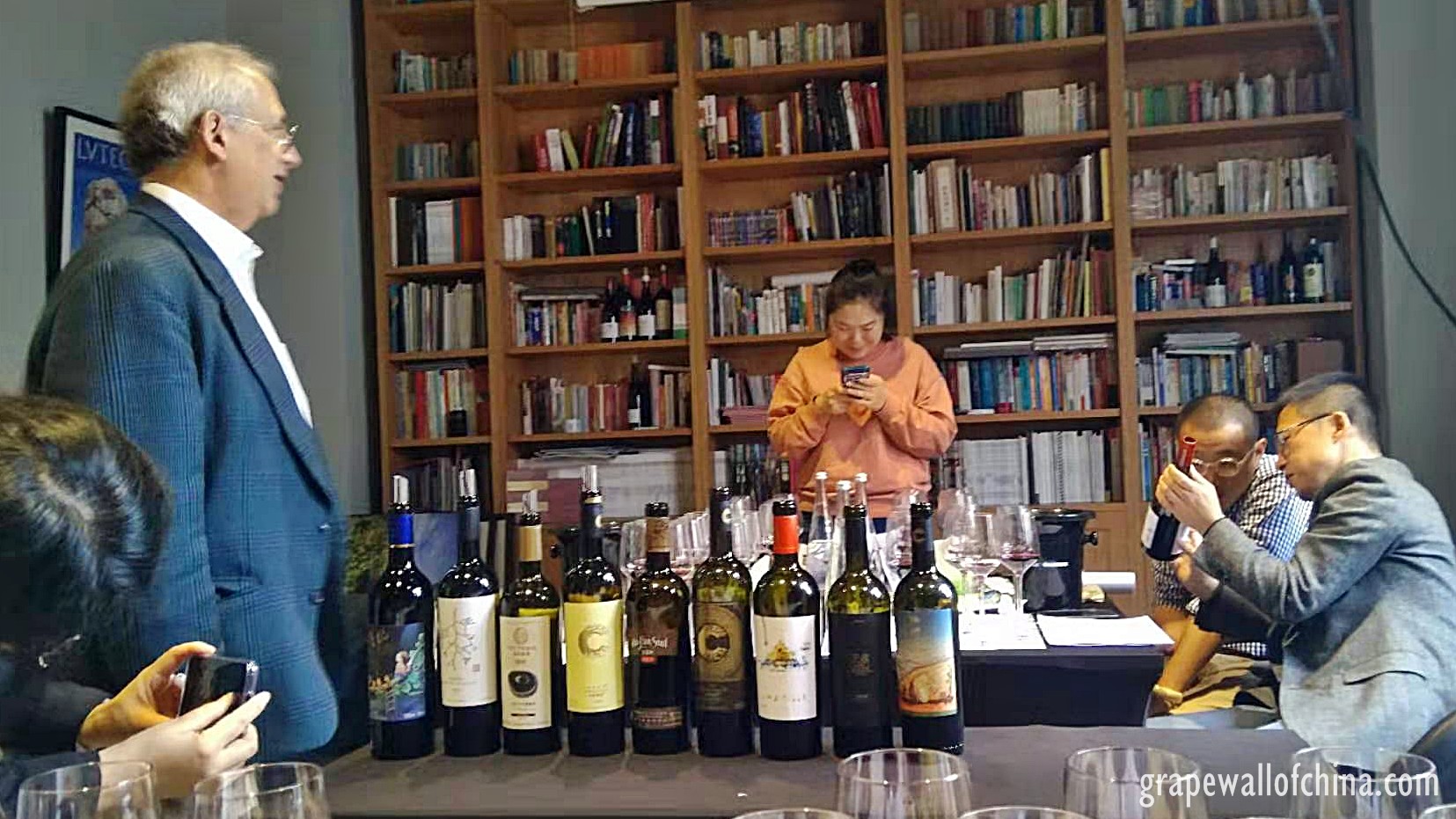Veteran French critic Michel Bettane visited Beijing two weeks ago and I joined his Chinese wine tasting. I’m interested in voices such as Bettane’s because France, Italy and Spain are leaders as wine producers but UK people and institutions, and to a lesser extent US ones, are dominating the criticism, education and publishing scenes. That seems crazy to me.
Anyway, Bettane delivers a blend of dry wit and sharp observations and had us chuckling and rethinking our assumptions. Ten comments by the quotable Bettane.
(Also see my interview with Bettane and his partner Thierry Desseauve in 2013.)
Wine and Civilization
“The blends [at today’s Chinese tasting] are better than the individual varieties but that is not a surprise to me. Blending is the beginning of civilization. It’s like a chef who is able to use individual ingredients to make a great meal.”
In other words, Cabernet Sauvignon is a bit barbaric alone, but add a splash of Merlot and Cabernet Franc and things get civilized.
Barrel Quality
“Perhaps the oak is not up to the quality of the wines. Perhaps French barrel makers do not sell their best barrels to China.”
Bettane cited numerous wines as having oak problems, the evaluations ranging from “poor” to “bad” to “bad bad” to “atrocious”.
“Oak-y Wine”
“The problem here is not the oak, it is the fault of the wine. My friend always says, ‘You never have too oak-y wine — you have under-wined oak’.”
I say something similar when I do something wrong: Don’t blame me, blame society.
Planting Vines in China
“Complexity is not democratic even in a communist country.”
In other words, making good wine means getting good grapes, and good blends of weather, soil et al are not distributed evenly across China. “It’s not a simple matter of putting vines in the soil,” says Bettane.
Cabernet Gernischt
“You can pull out the Cabernet Gernischt and graft on to the rootstock.”
In other words, he’s no fan of Cabernet Gernischt, said to be Carmenere, a grape many link to the start of China’s modern wine era with Changyu in 1892. We tried two Cabernet Gernischts. He said the first had green pepper aroma and “curious fruit”. The second? “For me, a wine without any interest.” Ouch.
A Ningxia Winery
“The way that the vines were planted, they will age too quickly. Not too dense, lots of space, maybe not the best quality of Cabernet Sauvignon and Merlot. They planted what they could find in nurseries. Plus, there is the difficult weather.”
Bettane spent a week touring Ningxia in 2012. And this was one of the top wineries.
A Chinese Moscato
“It’s well-made but it’s easy to make Moscato in a closed tank. If you have no beer to drink on a summer day, why not [drink this]?”
Next time Bettane visits my house, I know what to serve if the Duvel runs out.
The 69 Chinese Wines We Tried
“The technical quality of the wine was very good.” “The wine-making is very precise.” “Nothing yet is very great and complex — but it’s heading there.”
Finally, I sat beside Bettane during lunch. I told him I was writing about new French initiatives to reach the Chinese trade and consumer, such as Shanghai Vinexpo, Bordeaux Fete Le Vin and Lafite Longdai.
Masters of Wine
“The first generation of Masters of Wine were very good. The second and third generations have many bad tasters. Yes, there are some good tasters but also many bad tasters. It’s all about money now.”
This was after I asked him what he thought about France, Italy and Spain leading production but UK institutions / critics dominating criticism.
Spreading Wine in China
“The smaller cities need retail shops where consumers can touch wine. There are many cities with 500,000 or a million people. People there can buy online, but they need to come into contact with wine and get some information and ideas about what to buy.”
Also check out my post about tasting Chinese wine with Bettane.
Grape Wall has no sponsors of advertisers: if you find the content and projects like World Marselan Day worthwhile, please help cover the costs via PayPal, WeChat or Alipay.
Sign up for the free Grape Wall newsletter here. Follow Grape Wall on LinkedIn, Instagram, Facebook and Twitter. And contact Grape Wall via grapewallofchina (at) gmail.com.
